MOVIE REVIEWS |
INTERVIEWS |
YOUTUBE |
NEWS
|
EDITORIALS | EVENTS |
AUDIO |
ESSAYS |
ARCHIVES |
CONTACT
|
PHOTOS |
COMING SOON|
EXAMINER.COM FILM ARTICLES
||HOME

Friday, December 30, 2011
THE YEAR IN FILM 2011
Nostalgia And Magic In The Movies, At The Movies
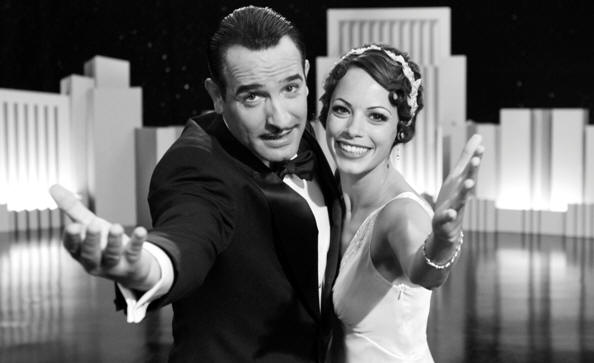
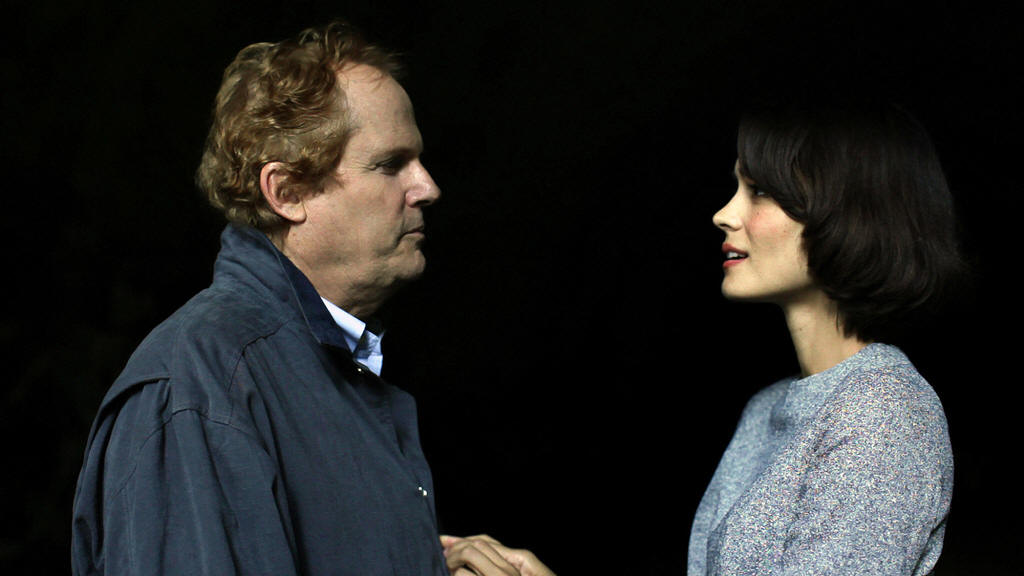
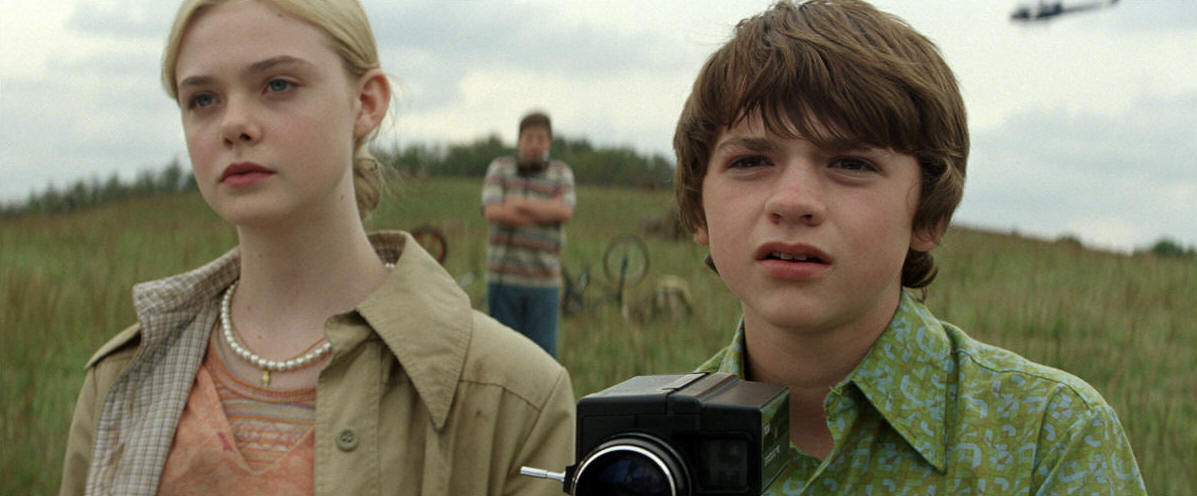
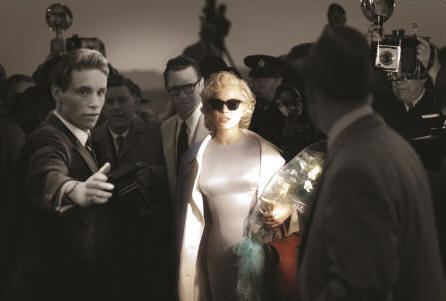
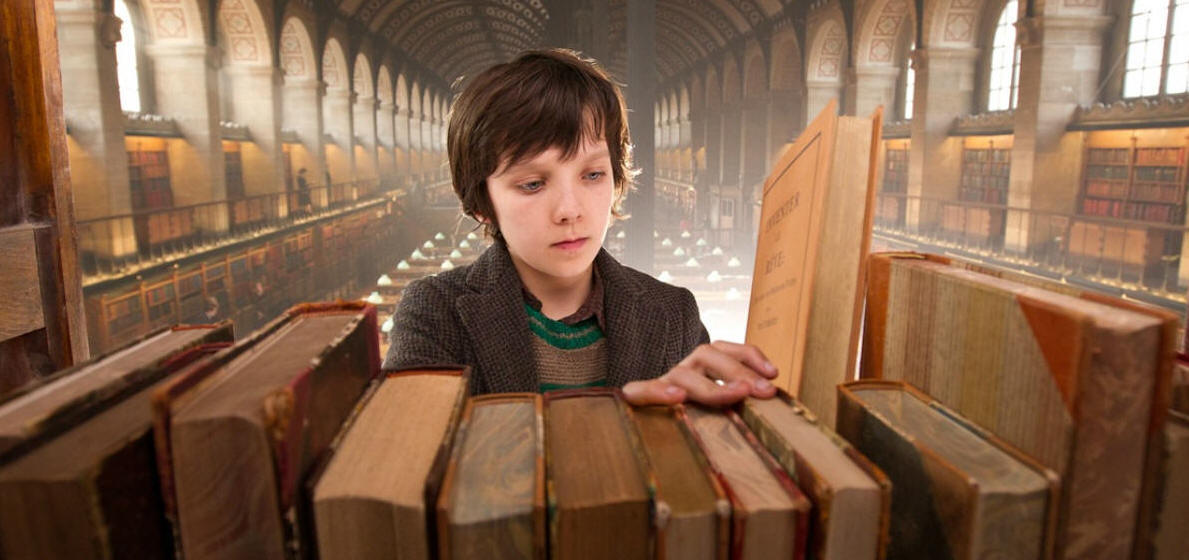
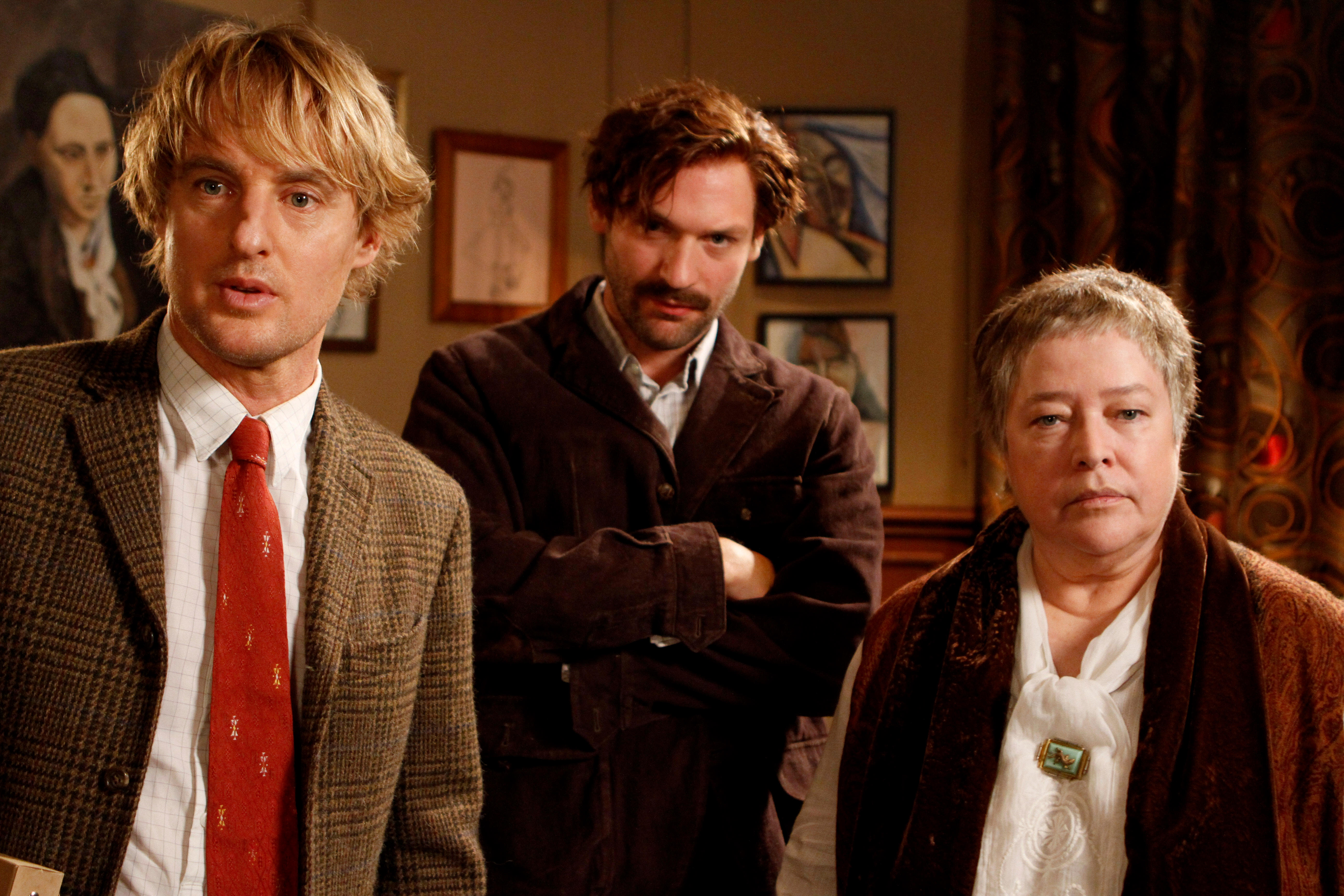
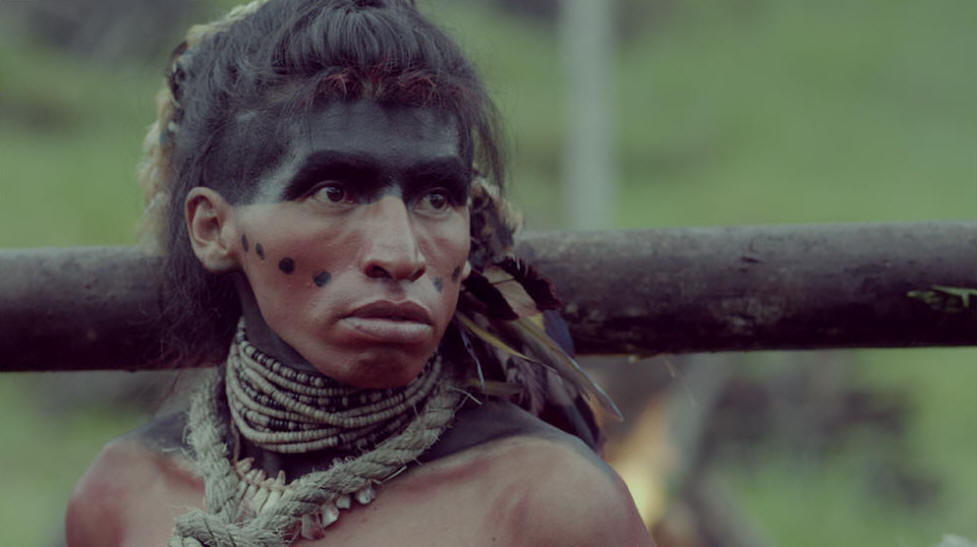
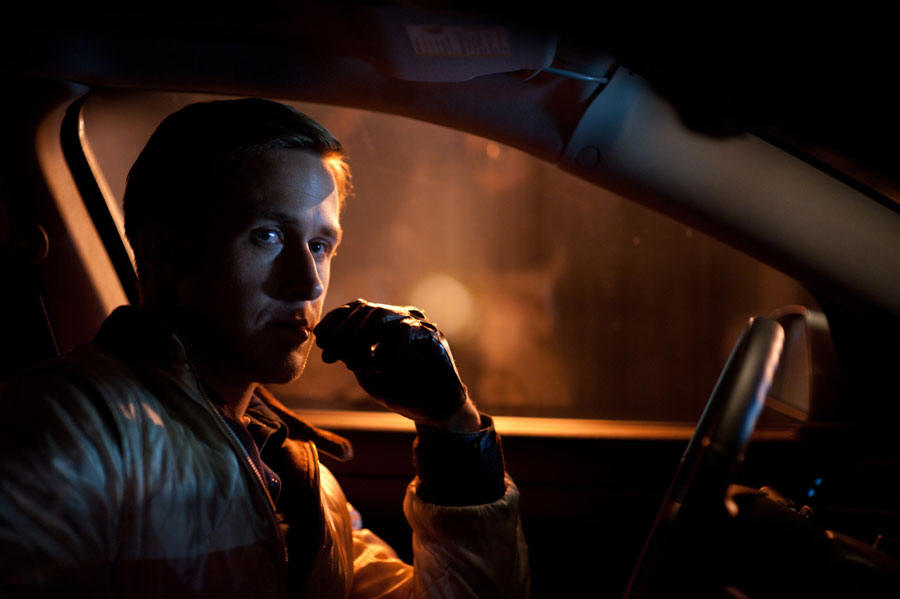
Scenes from top left, clockwise: "The Artist", "Road To Nowhere", "My Week With
Marilyn", "Midnight In Paris", "Drive", "Even The Rain", "Hugo" and "Super 8".
The Weinstein Company, Monterey
Media, Sony Pictures Classics, FilmDistrict, Vitagraph Films, Paramount Pictures
by
Omar P.L. Moore/PopcornReel.com
 FOLLOW
FOLLOW
Friday,
December 30, 2011
The year that was 2011 at the movies was very good in many respects though not
great. Overseas films remained masterful, but what stood out about this
year was the increased strength of the American independent scene, with such
films as "Martha Marcy May Marlene",
"Shame",
"I Will Follow", "Pariah",
"Mooz-lum",
"Meek's Cutoff", "Bellflower", "Kaboom!", "Kinyarwanda", "Weekend", "Myth Of The
American Sleepover",
"Like Crazy", and more.
Film critics caused a stir with embargoed reviews, apologies, regrets. One
got wonderfully nostalgic about Life Itself, a book written by the most
prolific, insightful, fair-minded and engaging critic America has, Roger Ebert.
(Mr. Ebert, to whom I contribute writings as one of a dozen phenomenally skilled
far-flung film correspondents, was so kind as to invite me to be a contributor
to his PBS television show, and
in May I exalted Alfred Hitchcock's 1956 film "The Wrong
Man".)
Overall, nostalgia in cinema was the theme of the year, with numerous films
tossing bouquets to film as an art form or as a historic document ("The Artist",
"Hugo".) Some of these were films-within-a-film, and the films contained
therein often told deeper truths and were better than the larger film itself.
("Super 8",
"Even The Rain",
"My Week With Marilyn".) There was even a
nostalgia in the way two filmmakers (J.J. Abrams, "Super 8"; Steven Spielberg,
"War Horse") tried recreating Mr. Spielberg. The latter did so, though not
particularly well, and threw in every cliché or weepy donut he could find for
his "Horse."
Then there was the singular
"Road To Nowhere", marking Monte Hellman's
triumphant return to feature films after two decades away. A film
virtually no one saw, "Road To Nowhere", written so keenly by Steven Gaydos, was
all about the movies, illusion and process. A true film-within-a-film,
"Road To Nowhere" evoked nostalgia without consciously trying to, its noir flair
effortless, as was the wonderful and imperceptibly distinct double-character
performance by Shannyn Sossamon, the best by any woman on the big screen in
2011.
One could make the case however, that the best performance by a woman wasn't on
the big screen but on television: Kate Winslet was astonishing in
Todd Haynes'
long-form HBO movie
"Mildred Pierce". Ms. Winslet was seen on the big
screen in 2011 in the ensemble drama
"Contagion" and Roman Polanski's comedy
"Carnage".
This year, more especially than in others, nostalgia-lauding films arose, both
collectively and implicitly reflecting a need to keep alive the spirit of the
grand movie past in an ever-changing movie present in Hollywood especially, one
which has proliferated with 3-D, CGI and remakes, sequels and superheroes.
Speaking of superheroes, in an era where "Captain America" felt strangely
jingoistic, a well-dressed advertisement for ambiguity, if not cheerleading,
where Nazism and white male Aryan supremacy were concerned.
"Green
Lantern" was the year's nadir, a sad mess that was suitably depressing to watch.
"Transformers 3" was insulting to watch.
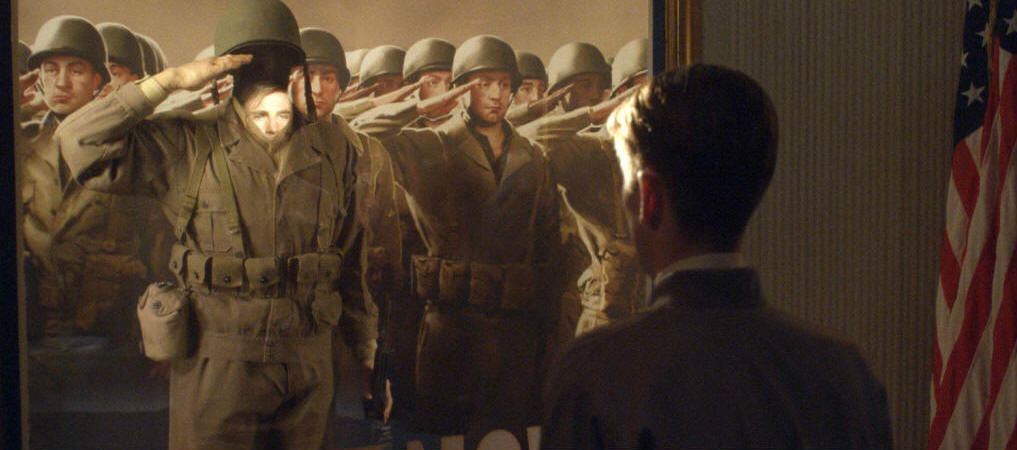
Nostalgic for American jingoism and Nazi festish?
The curious case of "Captain America: Masked Avenger".
Paramount
Pictures
Nostalgia, not of movies necessarily, but of artists and figures of a century
past, was celebrated memorably in Woody Allen's endlessly entertaining
"Midnight
In Paris", with Owen Wilson playing the director better than Mr. Allen does.
Mr. Wilson's character yearns to live in the past, has the typical Allenesque
neuroses about it, but gets to moonlight in it all.
Every film has elements of nostalgia: those moments that touch upon or reference
a desired past, even if that past is recent. If nothing else the audience
brings a sense of its own nostalgia -- the engines of their past or of a
preferred existence -- to any film. The very trip to the movie theater
itself is an escape, a nostalgia process all its own: that coming inside the
theater from the real, outside world in anticipation of an immersion in a world
of fantasy, idealism or a relatable past for two or three hours.
Even films that celebrated an era or atmosphere ("Drive") had film-within-film
self-referencing moments, including where stuntmen themselves were the illusion,
masquerading as fairy-tale players, placating a sense of safety before
unleashing something more furious and primal. "You alright?", Bryan
Cranston asks Ryan Gosling, who has just done a stunt in an egghead mask in
Nicolas Winding Refn's drama, and whom along with the masterful Albert Brooks,
will later wreak bloody havoc, in classic Steve McQueen guise.
There was no guise or "Shame" in
Steve McQueen, who brought his artistry to
limited audiences in the NC-17-rated film. Despite the ridiculous MPAA
rating -- when will Americans shed the historical Jekyll and Hyde puritanical? --
more saw "Shame" than Mr. McQueen's 2008 film "Hunger", which starred "Shame"
actor Michael Fassbender, who had one of the best-quality performance years of
any actor not named Jessica Chastain, she in no fewer than five movies, three of
which she was near-flawless in ("Coriolanus",
"The Tree Of Life",
"Take
Shelter".)
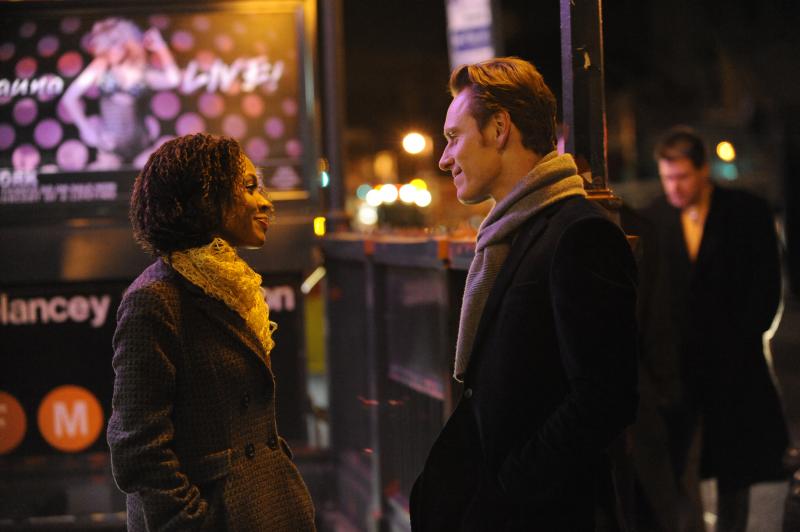
Nicole Beharie and Michael Fassbender in Steve McQueen's
drama "Shame".
Fox Searchlight Pictures
Then there were films that mocked the romanticism of romantic comedies, which
was once again an absolute Hollywood shambles, save for
"crazy, stupid, love.",
which poked fun at cliché in a sweet way.
"Friends With Benefits" tried,
huffed, puffed and fell back down the side of a steep hill.
"No Strings
Attached" -- that just flat-out flat lined. These latter two films
specialized in the gross-out factor to compensate for lack of story, and that is
true even of a film I loved,
"Hall Pass", but that wacky, crazy film's juvenile hijinks had behind them a core of truth that made the Farrelly Brothers film
more than a passable affair, mixing the gross with the reality that growing up
was just around the corner.
There was also
"Bad Teacher" -- not a romantic comedy -- but a film that didn't
have to go all out to be good, featuring good work from Cameron Diaz, Justin
Timberlake (also good in
"In Time", a better film than
"Inception") and Jason Segel, who is reputedly even better in "Jeff, Who Lives At Home", a film that
opens in 2012.
Seen, not heard
Then there were men who specialized in being seen and not heard this year, and
did fine work being silent. Jean Dujardin said nary a word in "The
Artist", which had only two audible words in its 100 minutes. Gary Oldman,
in the best work of his storied career, said volumes with his face and eyes in
"Tinker Tailor Soldier Spy" while occasionally -- and quietly -- talking.
Mr. Fassbender could barely talk in "Shame", but could get down and dirty with
any woman with just one look, a tragic super hero, much like his Magneto in
"X-Men: First Class". His mask was fear and in
"A Dangerous Method" it was
repression, with a halting sense of dread in his voice and eyes when confronted
by patient Keira Knightley. In
"Jane Eyre" Mr. Fassbender's Rochester ached
and crackled with tension. William Mapother said little in Mike Cahill's
"Another Earth" as did Ryan Gosling in "Drive". Carey Mulligan appeared in
both "Drive" and "Shame" with those certain near-mute men, but her acting in
both signified her maturity as a big screen craftswoman, and to fine effect.
Demián Bichir held back wonderfully in
"A Better Life".
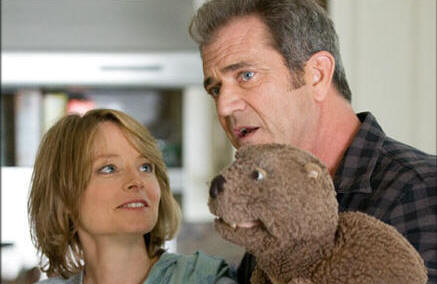
Jodie Foster and Mel Gibson in Ms. Foster's "The Beaver".
Overture
Films
Mel Gibson, who spoke volumes off screen in 2010, spoke through a puppet on it
in 2011, giving the best performance of his career in
"The Beaver", directed in
2009 by Jodie Foster (who spoke plenty in Mr. Polanski's
"Carnage".) Max
Von Sydow just wrote notes in
"Extremely Loud And Incredibly Close" while all
others in the film cried or screamed them. And how can one forget young
Laramie Eppler as R.J., the fated middle brother who was the source of Jack's
guilt in "The Tree Of Life"? The only thing I remember about Mr. Eppler
was his face, which was indelible, and the great Terrence Malick shot the film
in 2008. John Hawkes said almost nothing at all in "Martha Marcy May
Marlene" but the chills of his silences and patient speech could be felt all the
way up your spine.
Women who played women who played men were silent. Glenn Close was amazing
as the title character in "Albert Nobbs" with almost apologetic looks. Ms.
Close pretended to be a woman pretending to be a butler in an aristocratic Irish
home in the 19th century, and she did so well that it looked like her tragic
Albert was apologizing for breathing. Ms. Chastain had three or four lines
of onscreen dialogue in "The Tree Of Life".
The return of the emotional man
In just one scene Omari Hardwick showed more tenderness than toughness in
Ava DuVernay's lyrical
"I Will Follow". Mr. Hardwick's presence exemplified a
fine hybrid of masculine and feminine, a man in touch with his feelings and
sense of emotional strength. The one scene Mr. Hardwick shared with
Salli
Richardson-Whitfield was the most sensual in the movies in 2011, one very few
saw.
The emotions in most all of these film men percolated, with any brawn used only
as a last resort. These men brought an aching vulnerability, a refutation
of the bold, John Wayne, George Patton type-caricature that dominated movies
past. Any cigar-chomping Schwarzenegger "Governator" types were replaced
by toothpick suckers ("Drive".) These 2011 screen men weren't Bronson
vigilantes or
Eastwood machismo men (reversed ironically by
"J. Edgar"), but
some of them possessed the emotional ache and frailty Jack Lemmon had in films
like "Days Of Wine And Roses" or "The Apartment": men trapped by despair,
addiction, their bosses or inadequacy.
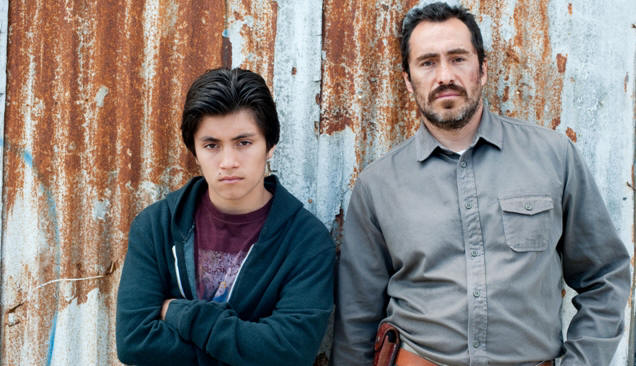
José Julián and Demián Bichir in "A Better Life".
Summit
When did this renewed emotional reservoir for the movie man start? It
probably never "ended", but I'd like to think that its rejuvenation began with
the humming engines of
Sofia Coppola's
"Somewhere" very late in 2010, with
Stephen Dorff as an empty, forlorn and near-silent stuntman in Los Angeles.
Ms. Coppola's film dovetails perfectly as a companion or prequel to Mr. Refn's
2011 L.A. story "Drive", with another near-silent stuntman revving up a car
engine across Los Angeles, an engine he seemed to be made of. Both Mr. Dorff and Mr. Gosling, like some real-life Angelenos, spent much of their time
in their respective films in cars or in motels, and as single fathers, real or
surrogate. Their fantasy worlds are replete with emptiness, and both,
especially Mr. Dorff, know that their lives in the L.A. they inhabit is
untenable. Mr. Gosling played up illusion and like his director Mr. Refn,
was awash in it.
Mr. Gosling, playing percolating slow-motion Man With No Name, silently ached
for recognition in "Drive" albeit as a fantasy hero but even more so as a
playboy with feelings in "crazy, stupid, love." Feelings also drove a
different more primal drive for first time feature director Evan Glodell in
"Bellflower", another brooding, striking Southern California drama, in which Mr. Glodell played a nice, tad geeky lead character whose sensitivity and
shortcomings were displayed before exploding into an apocalyptic hell, which had
no fury like the scorn he had for a heartbreaker. Tygh Runyan looked like
Stanley Kubrick and directed up a storm as the fictional Mitchell Havens in
"Road To Nowhere", a man who looked timid and all of a sudden wasn't.
Steve Coogan was left alone with his feelings in
"The Trip". James Marsden
was a shaggy, quivering imbecile in
"Straw Dogs", the kind that in a
Western would have been kicked around a saloon hostile to no-good varmints if
they dared show their face there.
The "Art Of Black" makes a comeback
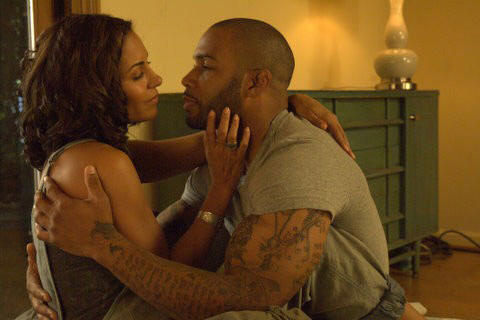
Salli Richardson-Whitfield and Omari Hardwick in "I Will Follow".
AFFRM
Black films and/or black directors made their significant presence felt in 2011, with no
fewer than a dozen films on the big screen, 20 years after the signature New
Black Wave of films. This crop was as artful, entertaining and persuasive
as some of the films in 1991.
"Jumping The Broom" (Salim Akil), "35 &
Ticking" (Russ Parr), "Tyler Perry's Madea's Big Happy Family", "The First
Grader" (Justin Chadwick) were among the many feature films or
documentaries directed by blacks or about blacks. (Notable documentaries:
"Thunder Soul", "Beats Rhymes & Life" and
"Rejoice And
Shout".)
Some other films weren't about black people per se but resonated
"Shame" (Steve McQueen), while others didn't "Abduction" (John Singleton).
There were wonderful debut feature films from
Qasim Basir ("Mooz-lum"), Djo
Munga ("Viva Riva!", the D.R. Congo's first film in a quarter century); Dee Rees
("Pariah") and Ava DuVernay ("I Will Follow"); the latter triumphantly pushed
independent black film to the forefront with her AFFRM film distribution
network. AFFRM also released Alrick Brown's "Kinyarwanda" by year's end.
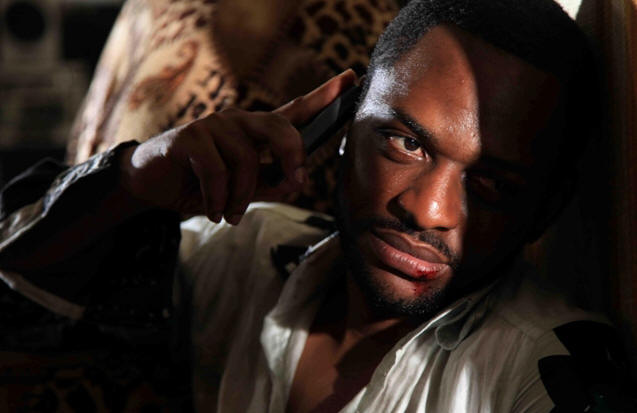
Patsha Bay in "Viva Riva!", directed by Djo Munga.
Music Box
Encounters at the end of the world
On the big screen 2011 felt like the end of the world, with at least four films
("Another Earth", "Bellflower",
"Melancholia", "Take Shelter") portending such
fate. Each film was distinct, and two were feature debuts -- "Bellflower"
and "Take Shelter" -- the former about a betrayal that felt like the end of the
world. The latter featured fine acting and felt like a new film from an
old era of 1950s sci-fi drama filmmaking.
Life, all around us
For all the calamity of the world's end, there was abundant proof that on the
big screen life was all around us. "The Tree Of Life", by far the year's
best film, and the best film in about 40 years, showed that life was a wonderful
drug to savor -- every moment of it captured across species and galaxies so
curiously and sincerely by Terrence Malick, whom with his film literally
celebrated life.
If Mr. Malick caught every possible nook and cranny in the cosmos to depict
life, then Kevin MacDonald's "Life In A Day", an invitational film made by
YouTube users worldwide recording their day on July 24, 2010, caught just about every life
on the planet. Mr. MacDonald compiled it all, shaping the many stories he
received, making it into a feature of snippets of everyday life. Trees and
life intersected, with
"The Tree", Julie Bertuccelli's meditation on
rediscovering a deceased parent, possibly reincarnated in the form of a tree.
"Beginners" was a sensual trip through life in the 1950s, 80s and 2003, Mike
Mills' film fondly recalling the semi-autobiographical journey of his late
father and himself.
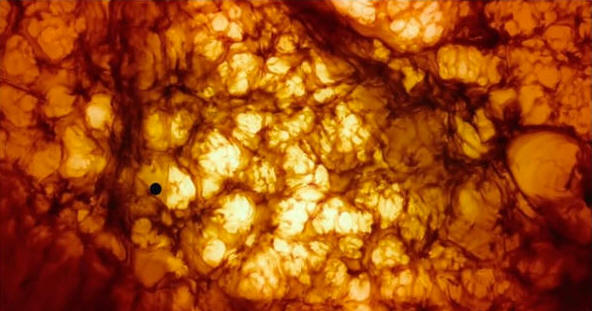
An image from the year's best film, "The Tree Of Life".
Fox Searchlight Pictures
The film that wasn't that was
Kenneth Lonergan's "Margaret" faced all kinds of obstacles before and during
2011 and prior, including lawsuits, delays, editing issues. Martin
Scorsese got on board to shape things up, and voila, "Margaret" got a
cameo-style-blink and you'll miss it release. Anna Paquin is reputed to do
very well in it as the title character.
Breakthroughs
Elizabeth Olsen was astonishing in "Martha Marcy May Marlene" and its director
Sean Durkin was equally up to the task in bringing it to the big screen.
Joseph Gordon-Levitt excelled in both
"Hesher" and
"50/50",
his two finest performances. Zoé Héran was phenomenal in Céline Sciamma's
French-language drama "Tomboy". John Boyega was marvelous in the equally
fine "Attack The Block". Hunter McCracken was great in "The Tree Of Life".
Kim Wayans, Pernell Walker, Adepero Oduye and Charles Parnell were all memorable
in "Pariah". José Julián did well in "A Better Life". Michole White
wowed for three minutes in a scene with the wonderful Salli Richardson-Whitfield
in "I Will Follow", and Nia Long did the best work of her career in "Mooz-lum".
Ray Stevenson bristled with irresistible confidence and charm in
"Kill The
Irishman", and Val Kilmer was equally good in Jonathan Hensleigh's film based on
the true story of Irish Danny Greene who took on the Mob and more or less won in
Cleveland in the 1970s.
Worsts
After being good in
"Buried" in 2010, Ryan Reynolds was figuratively buried by
two very bad films in 2011: "Green Lantern" and "The Change-Up". Both end
up on my year's ten worst list. (See below.) Kevin James wasn't far
behind with two poor films:
"The Dilemma" (to see or not to see was not even a
question), and "Zookeeper", one incredibly insulting piece of work. Adam
Sandler has long since stopped caring about the bad things some people have said
about the rotten 2011 films "Just Go With It" and "Jack And Jill", both directed
by Dennis Dugan -- the first deplorable, the latter I intentionally skipped.
(Everyone else -- aka very few people -- told me that "Jack" was rotten, except they used another word.)
Now Sarah Jessica Parker has caught the bug Mr. Sandler can't shake, developing a habit for being in one bad film
after another, with
"I Don't Know How She Does It" (a candidate for worst film
title of the year) and "New Year's Eve". With the dreadful
"Sex And The
City 2" in 2010, according to my fuzzy math that's a trifecta for Ms. Parker.
Bad films (and things) do come in threes. Fours if you count
"Did You Hear
About The Morgans?" from 2009. It was a terrible twosome
for Ken Jeong, who was in two bad sequels in 2011 ("Transformers 3" and "The Hangover
Part II".) And why oh why did Sofia Vergara have to go there in
"New Year's Eve"? Stereotyping in race, whether Jamie Foxx ("Horrible
Bosses") or Eddie Murphy ("Tower Heist") -- both played the same odious racist
stereotyped character -- was still a staple in some films. Did anyone
mention a Big Momma or two? And, lest we forget, the role Octavia Spencer
played in "The Help", a role she will probably be nominated by the Academy for
next month.
You don't have to be from here
Two films shot entirely on location in Los Angeles that exemplified their
atmospheres so well were "The Artist" and "Drive", both directed by filmmakers
(Michel Hazanavicius and Mr. Refn respectively)
from other countries. Both films gave audiences an entertaining take on Tinseltown that was refreshing.
The documentary "The Black Power Mix
Tape 1967-1975" captured Swedish filmmaker Göran Olsson's
perspective of what was happening in America during that time, when black
liberation movements were at their zenith.
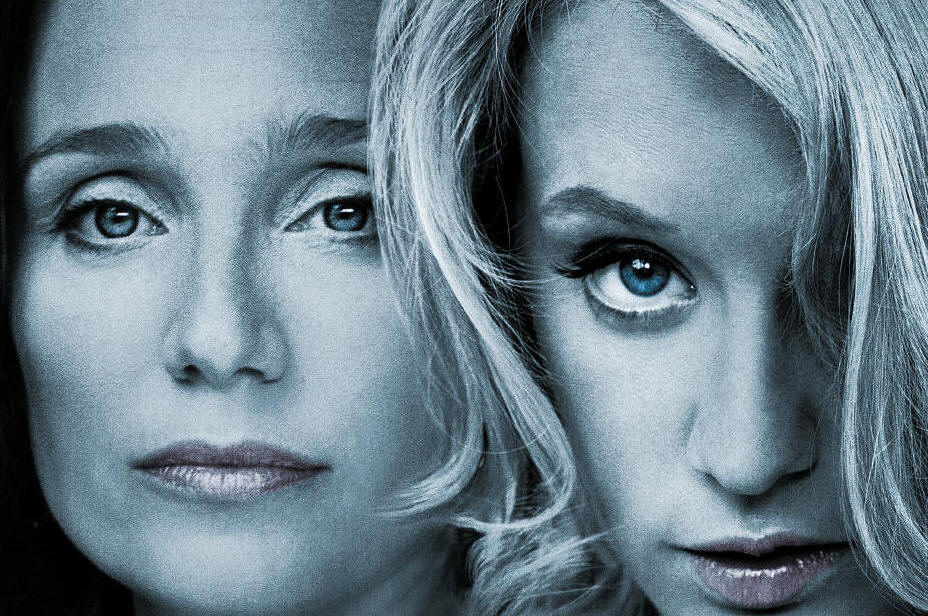
Kristin Scott Thomas and Ludivine Sagnier in "Love Crime".
IFC Films
Triumph of the sisterhood
Performance-wise, it was an extraordinary year for women on the big screen:
Meryl Streep ("The Iron Lady"), Glenn Close
("Albert Nobbs"), Jessica Chastain ("The Tree Of Life", "Take
Shelter", "Coriolanus"), Shannyn Sossamon ("Road To Nowhere"),
Viola Davis ("The Help"), Nia Long ("Mooz-lum"),
Adepero Oduye ("Pariah"), Marisa Tomei
("crazy, stupid, love."), Kirsten Dunst ("Melancholia"),
Michole White ("I Will Follow"), Charlotte Rampling
("Melancholia"), Salli Richardson-Whitfield ("I Will Follow"),
Nicole Beharie ("Shame"), Elizabeth Olsen
("Martha Marcy May Marlene"), Kim Wayans ("Pariah"),
Charlize Theron ("Young Adult"), Bérénice Bejo ("The
Artist"), Juliette Binoche ("Certified Copy"), Carey
Mulligan ("Drive", "Shame"), Michelle Williams
("Meek's Cutoff", "My Week With Marilyn"), Vanessa Redgrave
("Coriolanus", "Anonymous"), Jennifer Ehle ("Contagion"),
Freida Pinto ("Miral"), Pernell Walker
("Pariah"), Emma Stone ("crazy, stupid, love."), Marion
Cotillard ("Midnight In Paris"), Emily Blunt ("The
Adjustment Bureau"), Bryce Dallas Howard ("50/50"),
Michelle Yeoh ("The Lady"), Do-yeon Jeon ("The
Housemaid"), Gugu Mbatha-Raw ("Larry Crowne"), Loretta
Devine ("Jumping The Broom"), Anjelica Huston
("50/50")
Triumph of the sisterhood, part two
Kristin Scott Thomas ("Love Crime"), Ludivine Sagnier
("Love Crime"), Lucy Walker ("Shame"), Allison Janney
("The Help"), Sissy Spacek ("The Help"), Janet McTeer
("Albert Nobbs"), Mia Wasikowska ("Jane Eyre", "Albert Nobbs"),
Elena Anaya ("The Skin I Live In"), Kristen Wiig
("Bridesmaids"), Melissa McCarthy ("Bridesmaids"), Elle
Fanning ("Super 8"), Shailene Woodley ("The
Descendants"), Judy Greer ("The Descendants"),
Charlotte Gainsbourg ("The Tree"), Morgana Davies
("The Tree"), Kim Cattrall ("Meet Monica Velour"),
Zoé Héran ("Tomboy"), Robin Wright ("The Conspirator",
"Rampart"), Jodie Foster ("Carnage"), Uma Thurman
("Ceremony"), Sigourney Weaver ("Rampart"), Emily
Watson ("War Horse"), Trine Dyrholm ("In A Better
World"), Brit Marling ("Another Earth"), Sarah Paulson
("Martha Marcy May Marlene"), Felicity Jones ("Like Crazy"),
Helen Mirren ("The Debt"), Saoirse Ronan
("Hanna"), Cate Blanchett ("Hanna"), Tilda Swinton
("We Need To Talk About Kevin"), Natalie Portman ("Hesher"),
Rooney Mara ("The Girl With The Dragon Tattoo"),
Michelle Monaghan ("Source Code"), Beverly Todd ("I
Will Follow"), Olivia Colman ("Tyrannosaur"), Cameron
Diaz ("Bad Teacher"), Miranda July ("The
Future")
Did you see that?
Two films that everyone should have seen but didn't were documentaries with
women at their center: Lynn Hershman Leeson's "!Women Art Revolution" and
Jennifer Siebel Newsom's "Miss Representation" were vitally important films
about women in art and society and the perception of women on those stages.
Prescient, and resonant, both left a strong impression and called attention to
the issues they fervently and unabashedly advocated. Films like these are
the kind that help change or transform minds, and too few saw how good they
were. Similarly, "Hot Coffee" and
"Crime After Crime", which both played
mainly on the film festival circuit before bowing on cable television this year,
were keenly noteworthy.
Best action sequence or feat
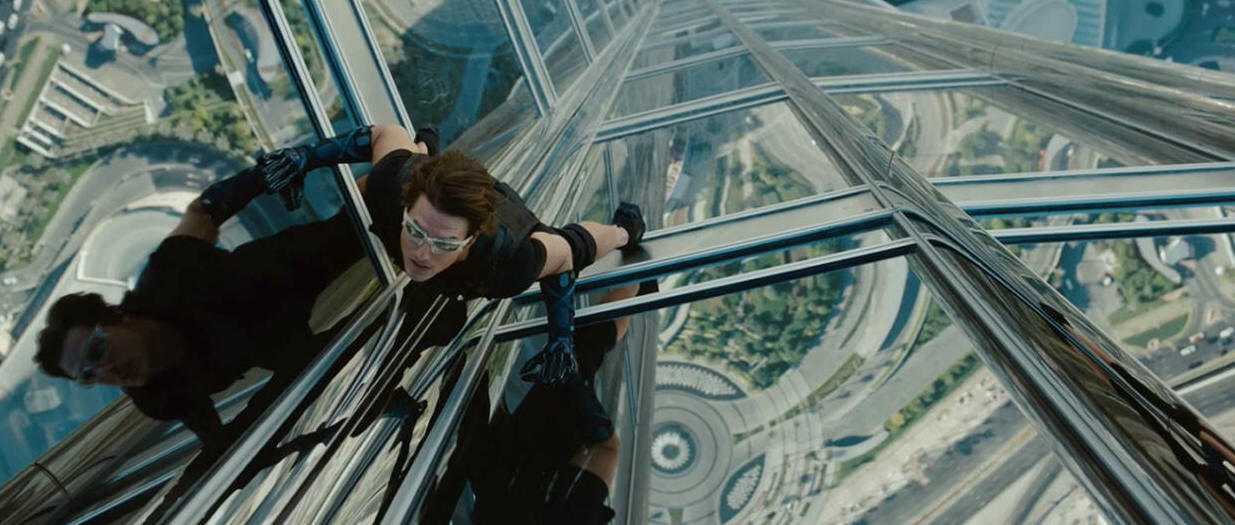
The indefatigable Tom Cruise in "M:i:4".
Paramount
Pictures
Hands down, Tom Cruise's stunt work in
"Mission: Impossible 4" was worth the
price of admission, if nothing else about Brad Bird's pulse-pounding action
flick was. Mr. Cruise escaped from tabloid-created headlines by running
down the world's tallest building, the Burj Khalifa, in Dubai. I'd see the
film again just to see this scene. Runner-up was Justin Lin's
"Fast Five",
which rejuvenated a flagging franchise. Fine action choreography dotted
the landscape, including the fight of 2011 on film, between Vin Diesel and
Dwayne Johnson. In third place, Eric Bana's kinetic, balletic fight in a
French subway in
Joe Wright's terrific
"Hanna", which featured the great score
by The Chemical Brothers.
For a good score...
Great music scores appeared in numerous films, including the aforementioned
"Hanna". Michael Giacchino had two ("Super 8" and "Mission: Impossible
4"), Howard Shore ("Hugo"), Alberto Iglesias ("Tinker Tailor Soldier Spy", "The
Skin I Live In"), Cliff Martinez ("Drive", "Contagion"), Trent Reznor & Atticus
Ross ("The Girl With The Dragon Tattoo"), Harry Escott ("Shame"), John Williams
("The Adventures Of Tintin") and Alexandre Desplat ("Carnage".)
The filmmakers who made a mark, tried 3-D or disappeared
Werner Herzog, Wim Wenders, Steven Spielberg and Martin Scorsese all tried 3-D
and their films sparkled on the big screen.
"Cave Of Forgotten Dreams" was
3-D at its best, and "Pina" (Wenders), "Tintin" (Spielberg) and "Hugo"
(Scorsese) all shone. These giants didn't "sell out", they adapted to a
renewed, if flawed and misused technology, showing their fellow community and
the world how a good 3-D experience should look. Ridley Scott has
"Prometheus" for 2012, reportedly in 3-D, a format which for better or worse is
here to stay.
Pedro Almodovar had decent results in
"The Skin I Live In", an arty fable that
broke the rules for audacious, but by Mr. Almodovar's high standards fell a
little short of his usual strengths. Still,
Antonio Banderas was
outstanding back with the director after more than 20 years away. Mr.
Banderas needs to work with Mr. Almodovar more often. Elena Anaya, also in
"Point Blank" this year, was tip-top perfect in "Skin" as an imprisoned and mysterious woman who is the key to
Mr. Almodovar's wild horror drama. Mr. Banderas donned the boots in the pleasant
animated surprise "Puss In Boots", and Johnny Depp thrived in the great
"Rango".
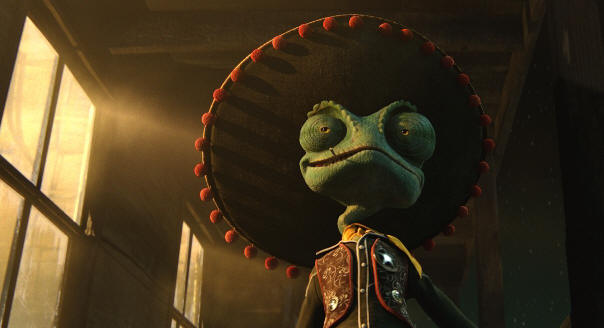
A scene from the animated film "Rango".
Paramount
Pictures
Steven Spielberg worked with British actors for both "The Adventures Of Tintin"
and "War Horse", getting better overall results filmmaking-wise in the former
than the latter in 2011, though Emily Watson was particularly good in "War
Horse". Meanwhile, Jean-Luc Godard mastered
"Film
Socialisme".
Clint Eastwood tried but couldn't quite launch "J. Edgar", and with three
successive years of underwhelming movies ("Invictus" in 2009,
"Hereafter" in
2010 and now "J. Edgar") one wonders if the brilliant and tireless Eastwood
needs a year or two off. (He'd probably say that a vacation is for sissies
or nomads or both.) "A Star Is Born" and other films are already in the
offing for the octogenarian.
On a sad note, the wonderful filmmaker Raoul Ruiz had completed "Mysteries Of
Lisbon" before he passed away late this year. But what happened to
the very
much alive David Cronenberg with the Masterpiece Theater of
"A Dangerous
Method"? Mr. Cronenberg took a vacation to pre-war Vienna and Zurich but
it seemed that he took one while directing this film, which featured Ms.
Knightley in too-over-the-top fashion.
Cameron Crowe went to the zoo with Matt Damon in "We Bought A Zoo", returning to
a semblance of warmth, fuzziness and intimacy borne of his "Almost Famous" and
"Jerry Maguire". Jason Reitman's
"Young Adult" felt more like Crowe than
Reitman, and Diablo Cody's script fit Charlize Theron wonderfully. Ms.
Theron's best work.

Charlize Theron in "Young Adult".
Paramount
Pictures
Actors or stars who directed films in 2011
Madonna went deep into Wallis Simpson territory in "W.E.", which will be seen by
American audiences in 2012. Angelina Jolie dug into the atrocities of the
Serbs and Croats in "In The Land Of Blood And Honey". Paddy Considine got
under the volatile skin of a drunkard in
"Tyrannosaur". Vera Farmiga
sought out "Higher Ground". Mathieu Almaric went into the world of
burlesque in "La Tournee" ("The Tour").
John Turturro
directed the wonderful, passionate "Passione", a documentary about 800 years of
music in Naples. Jodie Foster finally got "The
Beaver" to the big screen, while George Clooney did likewise in
"The Ides Of
March".
Remake shake and bake
"The Girl With The Dragon Tattoo", "Straw Dogs", "The Green Hornet",
"Arthur"
and more...
De-vanitized
Brad Pitt in
"Moneyball" and "The Tree Of Life" -- in the latter Mr. Pitt gave
arguably the finest performance of his career. Matthew McConaughey in "The
Lincoln Lawyer", where surfboards and bare chests took a movie off.
Bradley Cooper in the limp
"Limitless" and the abrasive, putrid "The
Hangover Part II".
Best of the best, worst of the worst
My list of the year's ten best films all signified in my humble (or
not-so-humble) estimation at least, high quality. Each of the titles is
compulsively re-watchable, morphing into something new and greater each time.
There's a timelessness about them, and some (Werner Herzog's "Into The Abyss"
and "Cave Of Forgotten Dreams") marked time in distinct ways typical of the
director.
Here were the next ten best:
11. "Carnage"
12. "Melancholia"
13.
"Kill The
Irishman"
14. "Martha Marcy May Marlene"
15. "Jane Eyre"
16. "Hanna"
17.
"Rise Of The Planet Of The Apes"
18. "Contagion"
19. "Midnight In Paris"
20. "Fast Five"
And the next ten:
21. "Viva Riva!"
22. "Attack The Block"
23. "Drive"
24. "Margin Call"
25. "Hugo"
26. "Pariah"
27. "Mooz-lum"
28. "I Will Follow"
29.
"Point Blank"
30. "The Black Power Mix Tape 1967-1975"
And these ten -- last call:
31. "The Trip"
32.
"The Last Lions"
33. "The Arbor"
34. "The Artist"
35.
"Puzzle"
36. "!Women Art Revolution"
37. "Trollhunter"
38. "Jumping The Broom"
39. "50/50"
40. "A Very Harold And Kumar Christmas In 3D"
Honorable mentions: "Even The Rain",
"Page One: Inside The New York Times",
"Hall Pass", "Larry Crowne", "Miral", "Bellflower",
"Passione",
"Film Socialisme", "The Lincoln Lawyer"
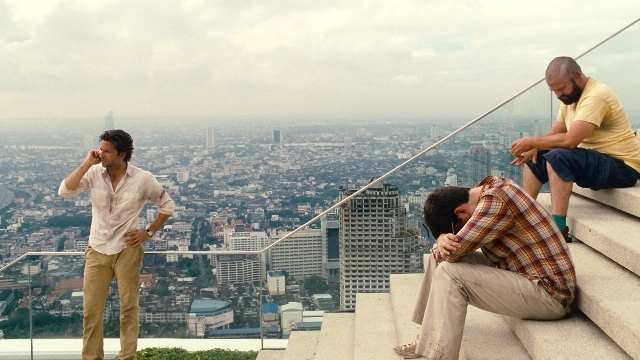
My number ten best film in 2009 was this year's sequel disaster:
"The Hangover Part II", hangnails and all. Warner
Brothers
The ten worst films of 2011
The very worst film of 2011 was
"The Change-Up", a despicable, mean-spirited
piece of garbage, and hater of women, babies and everything else, including its
audience. Directed by David Dobkin.
Here are the rest, from second worst on up, if you will:
2. "Just Go With It"
3. "Green Lantern"
4.
"The Green Hornet"
5.
"Transformers 3"
6.
"Sanctum"
7.
"The Hangover Part II"
8. "New Year's Eve"
9.
"Answers To Nothing"
10. "The Dilemma"
Other worse films:
"Unknown", "I Don't Know How She Does It", "Extremely Loud
And Incredibly Close", "Tower Heist", "Horrible Bosses", "The Help"
So that was just part of the film year that was 2011. I saw well over 250
films in 2011 but did not review every one of them. I aim to do so in
2012. Is that a New Year's Resolution? Don't hold me to it.
Want to? Check back in a year's time.
COPYRIGHT 2011. POPCORNREEL.COM. ALL RIGHTS RESERVED.  FOLLOW
FOLLOW
MOVIE REVIEWS |
INTERVIEWS |
YOUTUBE |
NEWS
|
EDITORIALS | EVENTS |
AUDIO |
ESSAYS |
ARCHIVES |
CONTACT
| PHOTOS |
COMING SOON|
EXAMINER.COM FILM ARTICLES
||HOME








 FOLLOW
TWEET
FOLLOW
TWEET











 FOLLOW
FOLLOW